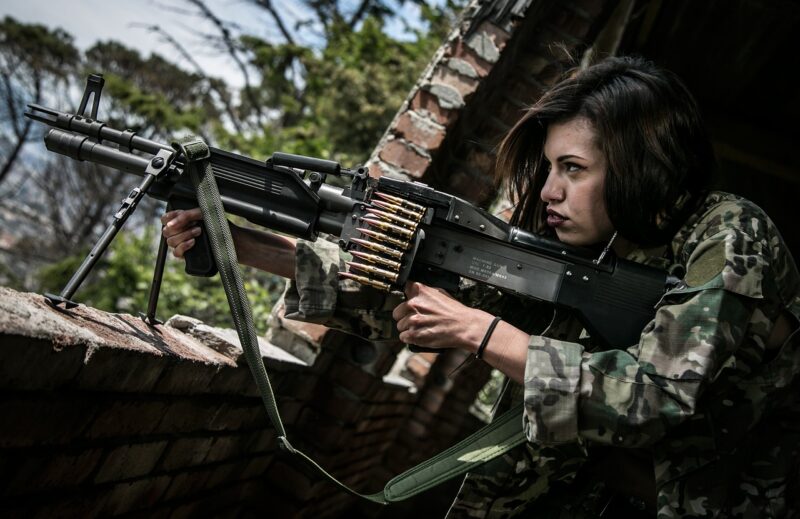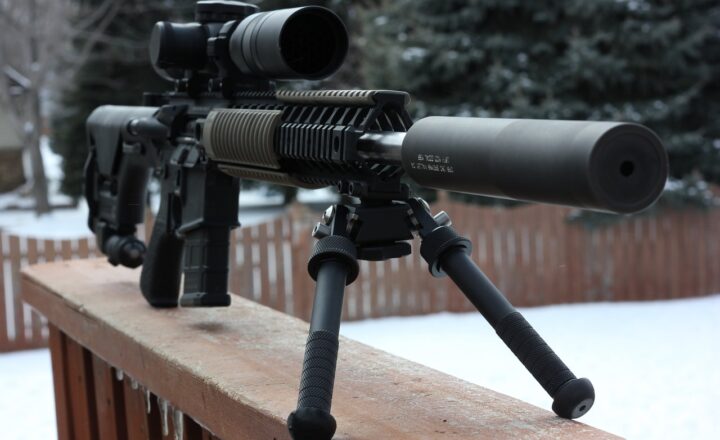The Role of Precision in Sniper Training and the Physics Behind It
November 11, 2024

The world of sniping is often shrouded in mystique, depicted in films and literature as a realm of extraordinary skill, focus, and deadly accuracy. But behind this portrayal lies a rigorous process that combines advanced training, a deep understanding of physics, and a profound respect for the art of marksmanship. In this article, we will explore the role of precision in sniper training and the physics that underpins the ability to hit a target with pinpoint accuracy.
1. Understanding the Precision Requirement
Precision is not just a desirable trait for a sniper; it is essential. The difference between a successful mission and a catastrophic failure often hinges on micro-level precision. In combat scenarios, even the slightest deviation from the intended trajectory can lead to missed targets or unintended casualties.
Snipers are trained to operate under extreme conditions, often accounting for factors that can alter bullet trajectory. Mastery of these variables is crucial, as a sniper might have to make critical decisions in a matter of seconds. Some key aspects of precision in sniping include:
- Environmental Factors: Wind speed and direction, humidity, temperature, and atmospheric pressure can all affect bullet trajectory. A sniper must learn to read these environmental cues effectively.
- Equipment Proficiency: Using specialized rifles and optics, snipers must be intimately familiar with their gear, including understanding its capabilities and limitations.
- Mental Focus and Control: The ability to concentrate amidst chaos is vital for any sniper. Mental training is often as important as physical training, helping shooters manage stress and anxiety during high-pressure situations.
As such, sniper training is designed to cultivate precision through a blend of technical knowledge, practical skills, and psychological resilience.
2. The Physics of Marksmanship
To understand precision in sniper training, it is necessary to delve into the physics that governs projectile motion. Several fundamental concepts come into play when a sniper aims and fires:
a. Gravity
Once a bullet is fired, it begins to fall under the influence of gravity. The effect of gravity on a bullet’s trajectory is significant, especially over extended distances. Snipers must know how far to aim above the intended target to compensate for this drop, a calculation made more complex by various environmental factors.
b. Wind Deflection
Wind can have a substantial impact on the bullet’s path. As a bullet travels, wind exerting lateral force can deflect it off course. Snipers learn to estimate wind speed and direction and make appropriate adjustments in their aim. This includes understanding concepts such as windage, which requires knowledge of how particular winds affect bullets over different distances.
c. Coriolis Effect
When shooting at long distances, snipers must also consider the Earth’s rotation—an effect known as the Coriolis effect. This phenomenon can alter trajectory slightly and must be accounted for in shots taken at ranges exceeding a mile.
Understanding these principles of physics is not only academic; it is critical for achieving precision. Snipers engage in extensive calculations to ensure that their training translates into on-target results.
3. The Training Process
The training process for becoming a proficient sniper involves multiple layers of skill acquisition, much of which focuses on enhancing precision through physics-based tactics:
a. Basic Marksmanship Skills
Before engaging in advanced sniper techniques, trainees must master basic shooting skills, including grip, stance, sight alignment, and trigger control. These foundational skills set the groundwork for future precision training.
b. Ballistics Training
Understanding ballistics—the study of the motion and behavior of projectiles—is crucial in sniper training. Trainees learn the principles of internal, external, and terminal ballistics. They study how bullets behave in-flight, including the impact of their design on performance and trajectory.
Another element is the use of ballistic calculators and environmental sensors that take real-time data and project the ideal aiming point based on a variety of factors, including distance, wind, and temperature.
c. Field Exercises and Live Fire Training
Field exercises are a significant part of sniper training. Trainees practice calculating shots under various environmental conditions while also engaging in live fire drills to reinforce quick decision-making and precision under pressure.
These exercises often include moving targets, simulated combat scenarios, and the use of different types of ammunition to prepare snipers for diverse operational environments.
4. The Psychological Aspect of Precision
Achieving precision is not solely a physical endeavor; the mental aspect of sniping plays a critical role. The psychological training element emphasizes several factors:
a. Focus and Patience
Snipers must develop the ability to focus for extended periods, sometimes waiting for hours to get the perfect shot. Training includes mental exercises that increase concentration and improve patience when conditions may lead to rushed decisions.
b. Stress Management
High-stress environments demand that snipers learn to control their emotions and remain calm under pressure. Techniques like mindfulness and visualization can improve a sniper’s ability to manage anxiety before and during a shot.
c. Confidence Building
Confidence is a critical component of effective sniping. Building confidence through repetitive training allows a sniper to trust their skills and equipment, enabling better focus during execution. This mental preparedness often distinguishes highly effective snipers from their peers.
5. Conclusion
In conclusion, the role of precision in sniper training is paramount and extends beyond just the act of shooting a weapon. It involves a comprehensive understanding of physics, environmental factors, equipment mastery, and psychological preparedness. Every element is interconnected, crafting a sniper’s unique ability to execute with both skill and accuracy.
By mastering these aspects, trainees embark on a journey that transforms them into highly skilled marksmen capable of accomplishing mission objectives under the most challenging conditions. The fusion of rigorous training, scientific principles, and mental resilience creates the cornerstone of exceptional sniping performance, making it both a science and an art. Whether in training or combat, the role of precision remains the definitive factor that delineates success from failure in the world of sniping.








